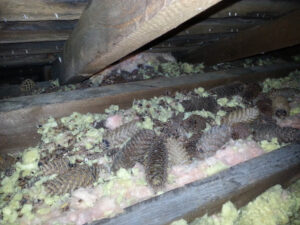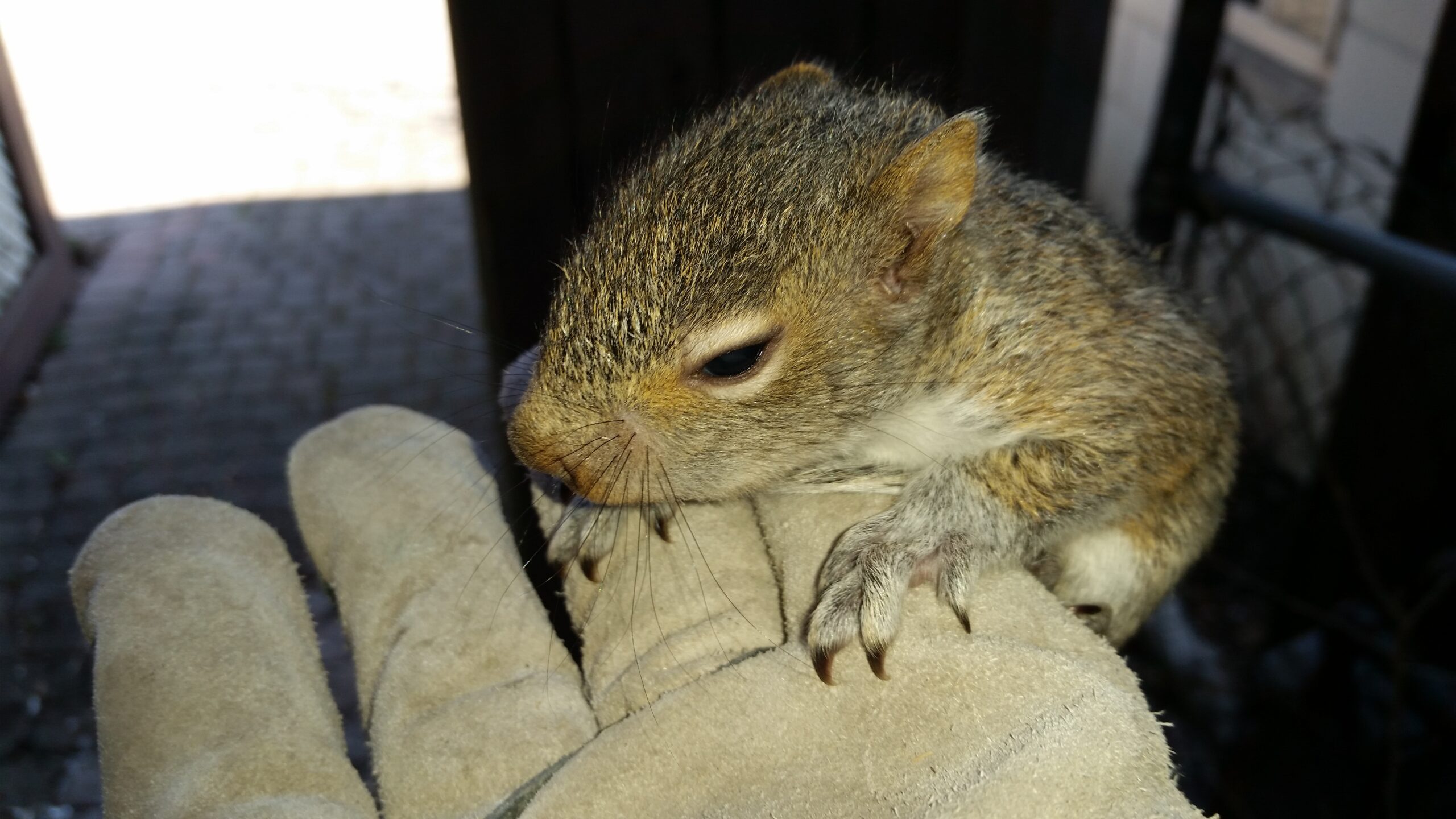Do you hear a tell-tale shuffling in your shed or see signs of animal activity? Garden sheds and garages are common places for squirrels to seek shelter, particularly mothers with babies. Learn more about how squirrels enter sheds and why you shouldn’t attempt DIY squirrel removal in Durham.
How Do Squirrels Enter a Shed?
Squirrels primarily look for safe shelters when they are pregnant or have a young litter. Because they breed twice a year, you can expect squirrels to be looking for a sheltered place to stay around late March to early May and July to August.
Squirrels need very little space to find their way into a shed. They are capable of chewing through wood, aluminum and even plastic to create a hole. They only need less than a two-inch gap to gain entry and can chew up a number of materials in your shed to create bedding and gnaw down their incisors. Because a shed is quiet, dark and a low traffic area for humans, it’s a popular option for squirrels in the early spring. Sheds that are located away from a home or unused through the winter are especially attractive shelters for squirrels to set up a nest and raise a young litter.
What Are the Signs of a Squirrel in My Shed?
Look for damaged materials to identify a squirrel in your shed. The signs of squirrels may be similar to mice or rats, so it’s best to contact a professional wildlife control service to identify the correct source of the damage. Sheds are a popular place for squirrels because they aren’t used all year. After a long winter, it’s not uncommon to find a squirrel nest in early spring.

How Can I Remove a Squirrel?
There are a number of squirrel removal strategies, but DIY removal is not recommended. These rodents are very protective of their nests and can become agitated if you attempt to remove them. If you do manage to evict the squirrel, you may find that they simply return through another, difficult-to-spot hole.
Don’t attempt to touch or handle squirrels on your own. These rodents can be dangerous when cornered and often carry ticks and fleas. Leave humane, safe removal to the professionals. Put away the spray foam, snares and other DIY tools and turn to a professional wildlife control team. At Skedaddle Humane Wildlife Control, we offer a three-stage system for your shed, garage or home:
- Assess and remove
- Clear and clean
- Prevent and protect
Assessing squirrel entry points and the extent of the nest allows our technicians to find the most humane and effective removal strategy. Next, we clear the nest and clean your shed of any contamination. This prevents the spread of diseases, fleas, and ticks, and also prevents other wildlife from assuming your property is a wildlife den based on scent. The last step is prevention and protection.
What Are Some Prevention Strategies?
For most squirrels, it takes professional measures to prevent another nest in your shed next year. DIY solutions, like closing up the hole, trapping or using spray foam, are often inefficient and sometimes dangerous. Without proper assessment and removal, closing up an existing hole could also trap young squirrels in your shed.
Choose a humane prevention strategy by working with our professional technicians. We tailor your solution to match your specific squirrel issue. Typically, we use heavy-gauge screening after completely removing squirrels and their nests from your building. There are a number of other techniques and tools we use, depending on the size of the hole, nest and the number of squirrels in your shed.
Contact us at Skedaddle today to schedule an inspection for your garden shed. Squirrels multiply and damage property very quickly, so don’t wait to see how a wildlife technician can restore your property and help you reclaim your garden shed in time for a DIY outdoor project or routine lawn care.



